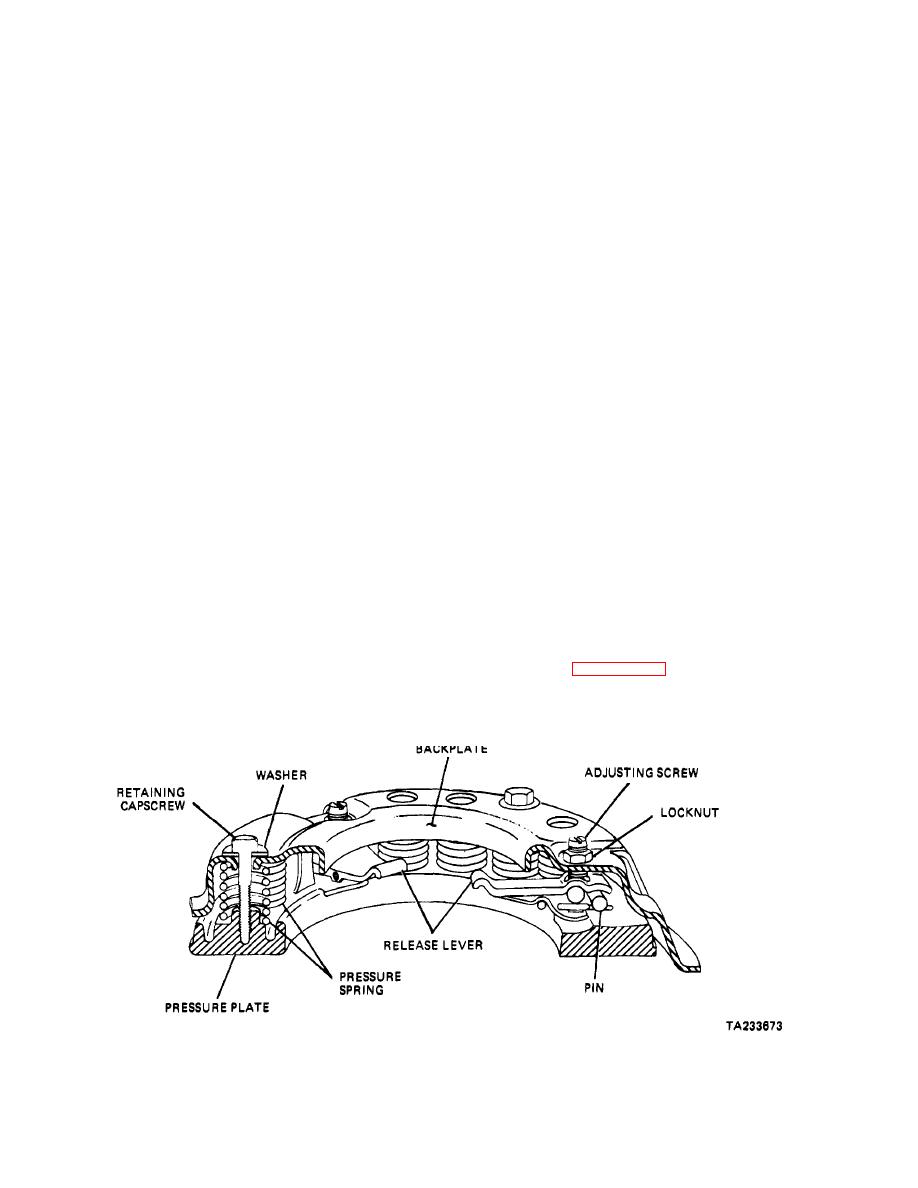
| Tweet |

Custom Search
|
|

|
||
 TM 9-8000
CHAPTER 21
CLUTCHES, FLUID COUPLINGS, AND TORQUE CONVERTERS
Section I. CLUTCHES
c. Operation. The transmission of power through the
21-1. Clutch Principles.
clutch Is accomplished by bringing one or more rotating
drive members secured to the crankshaft into gradual
a. General. Automotive clutches depend on friction for
contact with one or more driven members secured to the
their operation, whether it be solid friction as in the
unit being driven. These members are either stationary or
conventional clutch, or fluid friction and inertia as utilized
rotating at different speeds. Contact is established and
in the fluid coupling and torque converter. The fluid
maintained by strong spring pressure controlled by the
coupling serves the same purpose as the conventional
driver through the clutch pedal and suitable linkage. As
clutch, but the difference in the principle of operation
spring pressure increases, the friction increases;
makes It necessary to discuss the two mechanisms
therefore, when the pressure Is light, the comparatively
separately. Therefore, the first part of this chapter will be
small amount of friction between the members permits a
great deal of slippage. As the spring pressure Increases,
torque converters will be discussed in paragraphs 21-5
less slippage occurs until, when the full spring pressure
thru 21-9.
is applied, the speed of the driving and driven members
is the same. All slipping has stopped and there is, in
b. Purpose. A clutch in an automotive vehicle provides
effect, a direct connection between the driving and driven
a means of connecting and disconnecting the engine
parts.
from the power transmission system. Because the
internal combustion engine does not develop a high
starting torque, it must be disconnected from the power
21-2. Clutch Elements. The principal parts of a clutch
train and allowed to operate without load until it develops
are the driving members, attached to the engine and
enough torque to overcome the inertia of the vehicle
turning with it; the driven members, attached to the
when starting from rest. The application of the engine
transmission and turning with it; and the operating
power to the load must be gradual, to provide smooth
members, which include the spring or springs and the
engagement and to lessen the shock on the driving parts.
linkage required to apply and release the pressure that
After engagement, the clutch must transmit all the engine
holds the driving and driven members In contact with
power to the transmission without slipping. Further, It is
each other. Figure 21-1 shows a clutch cutaway so
desirable to disconnect the engine from the power train
operating members can he seen.
during the time the gears In the transmission are being
shifted from one gear ratio to another.
Figure 21-1. Components of Typical Clutch.
21-1
|
||
 |
||